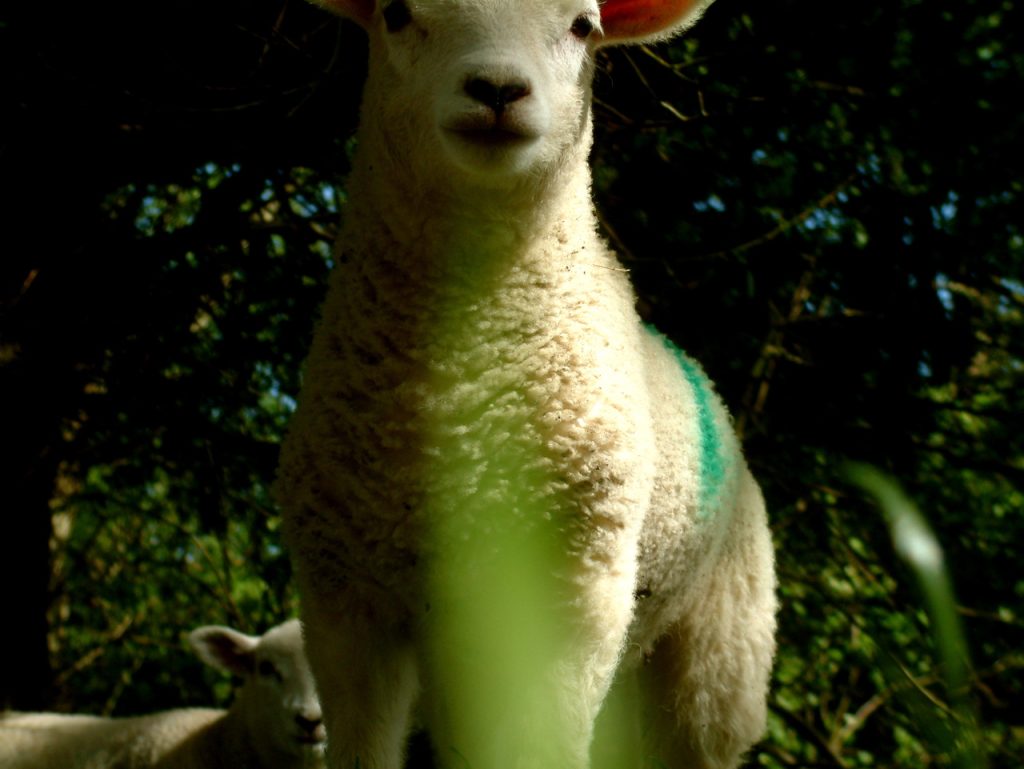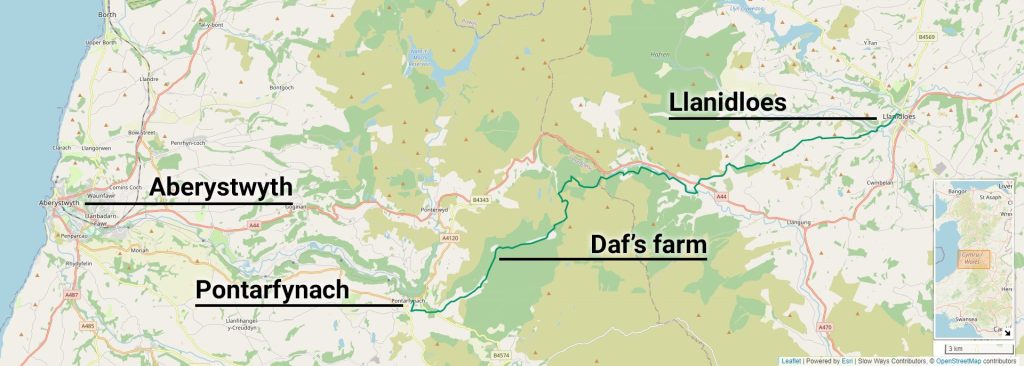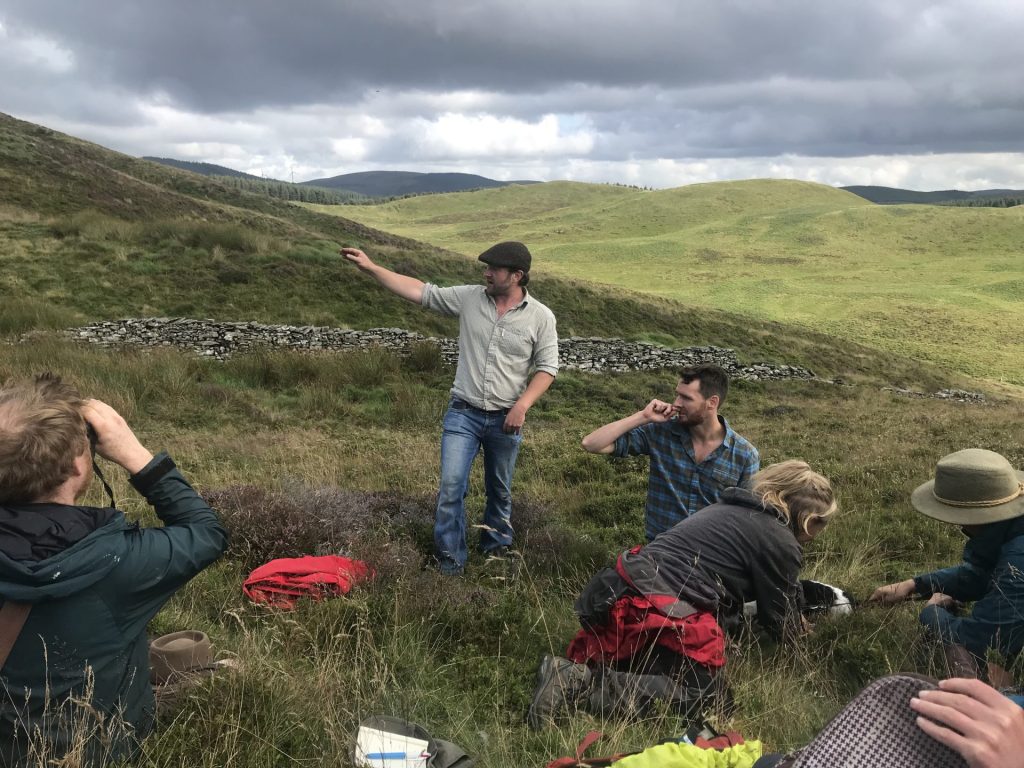Sheep farmer and Duke of Edinburgh supervisor Dafydd Morris-Jones explains how walking his rounds gives him useful sensory information
I walk twelve miles a day during lambing, and always lose plenty of weight. I can tell I don’t walk as much as that the rest of the year; I get podgy over Christmas! It’s a mile and a third straight from the bottom of my farm right to the top, but the wiggly route is two miles, then two back. I do that three times a day or even four at the very height of lambing.
If I ride there on a quad bike, the sheep think that I’m there to feed them and run towards me. If I walk down, I get to observe their behaviour.
In an area without fences, a flock establish a heft, the area that the sheep collectively understand as their own, and stick to. They pass this knowledge on from ewe to lamb over generations. Rams wander and don’t stick to a heft, but wethers (male castrated sheep) get protective and stay with the flock.

As part of creating and maintaining the heft, sheep go to have their lambs in the same spot that they were born in. They’re obsessed by their little place. But there are spaces, including rocky outcrops, little hollows, and root cellars, that the sheep will go to if they don’t feel well. If a sheep turns up in one of those places, I know who to keep an eye on as their labour gets closer. On foot, I can see who has moved position since I last passed.
It’s not just looking. I listen too, for persistent bleating, or for when it’s overly quiet. That’s a lot of sensory information that I wouldn’t get in a vehicle.
Sheep go to have their lambs in the same place they were born in
Many farmers have all their sheep lambing inside. There tends to be more mismothering inside, and increased infection as they move from shed to shed (editor’s note: mismothering is when ewes don’t know which calf is their own due to, for example, the calf having the scent of a different mother). There are higher feed costs, but no predators: it’s probably a zero sum game. Outdoors, the ewes stop lambing at dusk (for fear of predators) and so there’s a glut of lambs born at dusk, and then again at dawn.
I’m probably a bit of a hippy when it comes to lambing, but outdoors just feels more natural to me. Shed-born sheep don’t get the heft, which also affects how they graze: they stick together in a bunch. Outdoor-born sheep stick to their own 50-metre spot. Over generations you see lambs with the same temperament as their mothers, and the outdoor-born are more wilful: their spot is more important to them than being compliant!
I’ve got ankle trouble at the moment though, which puts my back out and that makes my arm hurt. The doctor said it’s a classic case of farmer injury; from trudging long distances in wellies, day in, day out.
Even outside of lambing season, I prefer to walk; I can be more present. And I still love a holiday stroll for pleasure. On my honeymoon, we walked around Peru!
From Easter to October, I do Duke of Edinburgh award supervision, shepherding children. The groups of children plot a route to a wild camping spot, and I walk a parallel path which is probably twice their distance, keeping out of sight. We meet up once so I can ask them how it’s going and give them water.
From a distance I can see who is struggling, sitting a bit apart, and often trailing behind. I can see who has weighted their bag badly and will be suffering by the end of the day. Then, I can sensitively tell them how I pack my bag, for example, without giving specific support. These days it’s not just about getting through the landscape; they’re now asked to do a presentation on some aspect of the landscape that they have been observing, including grazing patterns, flora and fauna, number of holiday homes, infrastructure and water use. This makes the walk more conscious, less mechanical and more respectful of the countryside they are walking through.
There’s something wonderful about walking. It’s in the tiny differences.
🐌
Daf’s farm is between Ponterwyd and Devil’s Bridge in Ceredigion, Mid Wales. Walk Devlla two from Devil’s Bridge to Llanidloes if you want to walk through his landscapes. (Plus it’s had two reviews already, so the next person to walk it gets the snail badge, and adds it to the verified network!) If you’re not already signed up to review Slow Ways routes, do so here.


Dafydd Morris-Jones
Dafydd is a farmer, Duke of Edinburgh supervisor, caver and cave rescue volunteer, translator, dad, and many more things. He’s also involved with steering Tir Canol, an exciting co-designed community initiative that’s designing and providing positive outcomes for nature and people through the use of the land and sea in Mid-Wales, in an area with hundreds of landowners.